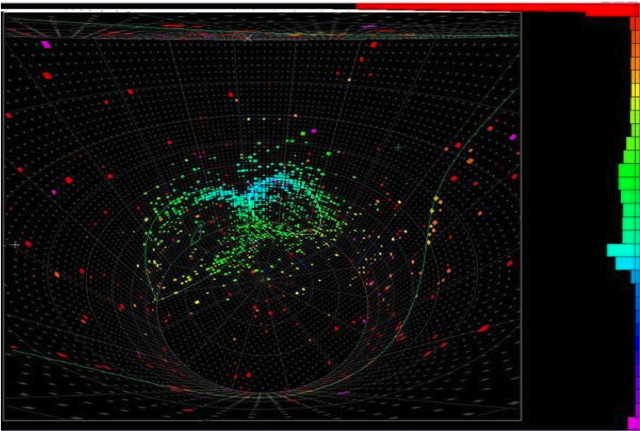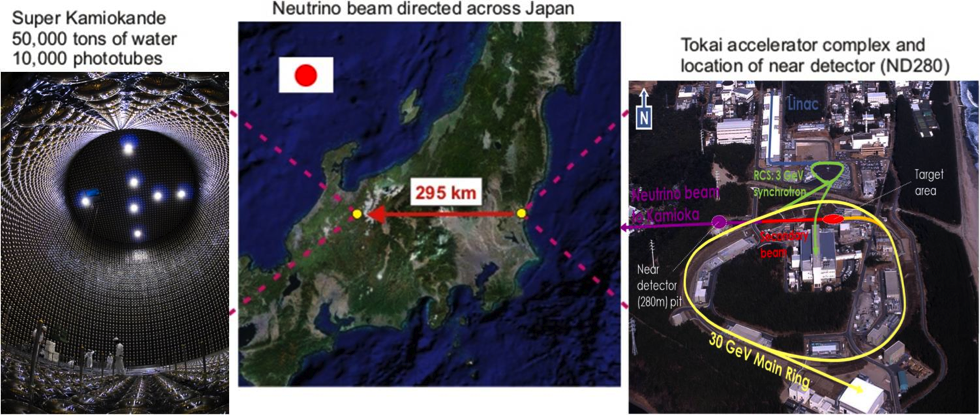T2K (Tokai-to-Kamiokande)
The T2K (Tokai to Kamioka) experiment is a second generation, long baseline neutrino oscillation experiment with the main goal to discover the transformation of muon neutrinos into electron neutrinos. A high intensity muon neutrino beam, the first so called superbeam, produced at the J-PARC laboratory near Tokai in Japan, is sent over a distance of 295 km across Japan towards the existing Super-Kamiokande (SK) detector. SK is a 50 kton water Cerenkov detector and is used to measure the flux of arriving neutrinos. With the near detector ND280, located only 280 m downstream of the proton target where the neutrino beam is produced, the flux of neutrinos is measured before they could oscillate into a different flavor. The flux extrapolated from ND280 to the SK detector is compared to the measured flux at SK.
The experiment has started data taking in 2010. In 2011 T2K provided the first experimental indication of the appearance of electron neutrinos in the muon neutrino beam, i.e., muon neutrino to electron neutrino oscillation, a transition which was never observed before.
This result opens the way to the search for CP-symmetry violation in the lepton sector in the next phase of the experiment. The observation of the CP asymmetry is among the most important topics in particle physics since it could contribute to the explanation of the dominance of matter over antimatter observed today in the Universe.
T2K is also measuring with high precision the disappearance of muon neutrinos, i.e., the deficit of muon neutrinos arriving at SK compared to the expectation without oscillation. This will lead to much improved values of the oscillation parameters.

